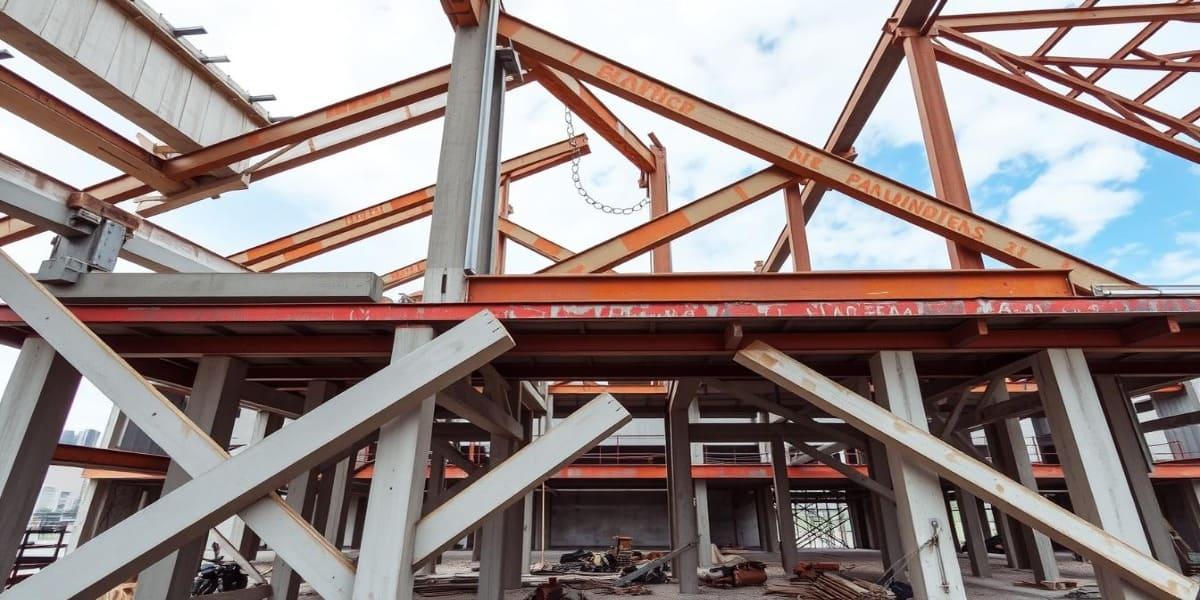The Geometry of Strength: Designing and Assembling Metal Trusses

Approaches to Metal Truss Construction
-
Welded Fabrication: Fuses metal components, creating a continuous, highly rigid structure. Offers superior strength and stiffness, crucial for heavy loads and permanent installations demanding ultimate structural integrity.
-
Bolted Assembly: Connects truss members using mechanical fasteners. Provides flexibility for modularity, easier transport, and future modifications, making it highly adaptable for diverse project requirements.
-
Riveted Construction: Utilizes permanent rivets to join metal sections. Delivers robust, durable connections, often chosen for its distinctive aesthetic and proven long-term performance in structural applications.
Key Evaluation Criteria
-
Structural Performance: Evaluate load-bearing capacity, rigidity, and resistance to fatigue under diverse environmental conditions and stress.
-
Assembly Efficiency: Consider fabrication speed, specialized tooling, labor intensity, and total time from component delivery to installation.
-
Cost Implications: Analyze material, labor, equipment, and long-term maintenance costs, considering future repairs or modifications.
-
Design Flexibility: Assess adaptability to complex geometries, material integration, and capacity for changes during design or construction.
Comparative Analysis of Truss Assembly Methods
Welded trusses offer superior structural performance, with continuous load paths and exceptional rigidity. This method minimizes stress concentrations, ensuring high fatigue resistance. However, assembly efficiency is lower, demanding skilled welders, specialized equipment, and rigorous on-site quality control, which can extend project timelines.
While material costs are comparable, labor for welded structures is higher due to specialized skills and equipment investment. Design flexibility is excellent for intricate geometries. However, modifications post-fabrication are challenging and costly, often requiring substantial rework and impacting project budgets significantly.
Bolted trusses provide reliable structural performance, though potentially less rigid than welded due to joint slip. They offer good fatigue resistance when properly designed. Assembly efficiency is a key advantage; components are fabricated off-site and rapidly assembled with standard tools, reducing on-site labor and time.
Cost implications for bolted systems are often favorable. Fabrication is less labor-intensive, and quicker on-site assembly reduces overall project duration and expenses. Bolted connections offer superior design flexibility for modularity, easy disassembly, and future modifications, adapting well to evolving project needs.
Riveted trusses demonstrate excellent structural performance, offering robust, durable connections with good fatigue resistance, particularly in heritage applications. However, assembly efficiency is notably lower; riveting is labor-intensive, requiring specialized tools and skilled personnel, leading to longer fabrication times.
Cost implications for riveted construction are generally higher due to intensive labor and specialized equipment. Fabrication is slower and more expensive. Design flexibility is limited; complex geometries are harder to achieve, and modifications post-assembly are extremely difficult and costly, making it less adaptable.
Recommendations for Method Selection
For projects demanding maximum strength, rigidity, and a monolithic structure, welded fabrication is often preferred. This method is ideal for large-span roofs, bridges, or industrial frameworks where structural integrity under extreme conditions is paramount. Stonecraftjit ensures precision in such applications.
When modularity, ease of transport, or future modifications are key, bolted assembly offers significant advantages. It suits projects requiring rapid deployment, temporary structures, or components needing relocation or expansion. Its efficiency makes it a practical solution for diverse applications.
Riveted construction, though labor-intensive, excels in restoration projects, structures needing a historical aesthetic, or when proven long-term durability is valued over speed. It provides unique character and robust connections for specialized architectural and engineering endeavors.
The optimal choice balances structural needs, project timeline, budget, and design flexibility. Consulting experienced structural engineers is crucial to assess specific requirements and determine the most appropriate method for achieving both strength and efficiency. Stonecraftjit guides clients in making informed decisions.

Amrita Vaidya
This article provides a clear overview of the different truss assembly methods. The comparison is well-structured and easy to understand.
Rohan Dey
Thank you for your feedback! We aim to provide concise and valuable insights for our clients.
Arvind Kher
I found the section on riveted construction particularly interesting, highlighting its unique applications. It's good to see all three approaches covered.
Manasi Gahoi
We appreciate your observation. Riveted construction, while less common today, holds significant value in specific contexts, which we felt was important to address.